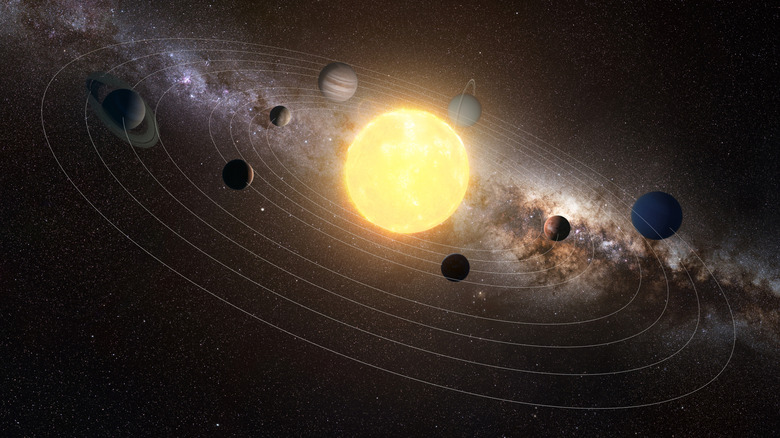Here's What Happens When A Compass Is Used In Outer Space
Compasses are an emblem of the spirit of adventure. They were one of the earliest navigation tools used by explorers to map the globe, and have stayed in use from the age of ships to the era of aircraft. These days, however, our exploratory spirit has us looking to the stars, and that's one field of exploration where a compass isn't very useful.
The needle of a compass is a magnet, and it moves because it is being pulled towards another magnet. That second magnet? Planet Earth itself. Our home world is surrounded by the strongest magnetic field of any terrestrial planet. This magnetosphere, as it is properly known, has two poles, just like any other magnet, and the needle of a compass is attracted to the north pole of the magnetosphere. The magnetic north pole isn't actually the same as the geographic north pole — it's about 1,000 miles south of there in Canada — but it's close enough for most navigation purposes.
As long as an astronaut remains within Earth's magnetosphere, their compass would still point to the planet. Contrary to its name, the magnetosphere is not a sphere, but rather an elongated, comet-like shape. The side that faces the sun extends about 23,000 miles from Earth, but the side facing away from the sun reaches 10 times further because it isn't compressed by solar winds. The International Space Station is well within the magnetosphere, meaning a compass up there would still point home. Beyond the magnetosphere, though, things get complicated.
Navigating beyond the magnetosphere
If you were to use a compass outside of Earth's magnetosphere, it would then be drawn to whatever the most powerful magnetic field within its vicinity is. Magnetic fields are generated by the movement of molten metal in the core of bodies like planets, moons, and stars, but not all celestial objects feature this effect. Despite the fact that Venus is often called Earth's twin, it does not produce a magnetic field. Neither does our moon. If you were to use a compass on either of these places, the needle would move around erratically, guided only by tiny amounts of magnetic minerals present in rocks.
Of all the planets in the solar system, Jupiter has by far the biggest magnetic field, reaching roughly 12 million miles beyond the planet's surface. That's 15 times wider than the diameter of the sun. The Jovian magnetosphere reaches all the way to the orbit of Saturn, meaning you could be closer to Saturn than Jupiter, and your compass might still point back to the latter.
If you aren't within a planet's magnetosphere, your compass is going to point to the sun. The sun has a magnetic field of its own called the heliosphere, which is so big that it encompasses the entire solar system. Of course, locating the sun isn't exactly difficult to do, and unless you are looking to navigate right into the molten solar core, this sort of defeats the purpose of a compass.

